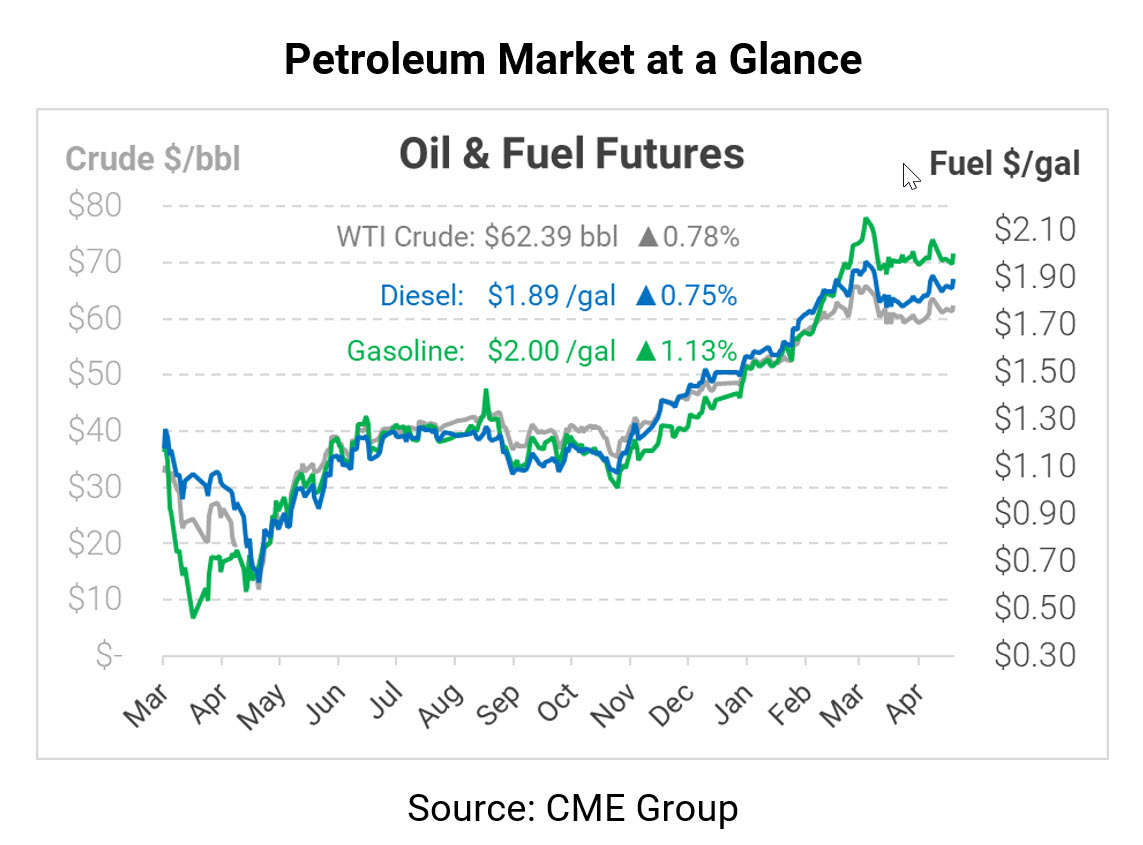
US to Distributes Vaccines, OPEC+ Sees Demand Risk from Outbreaks
After a rocky start at the beginning of the day, oil prices moved higher yesterday following an announcement that the US would begin distributing its stock of AstraZeneca vaccines to other countries. The US currently has 60 million AstraZeneca vaccines in stock, but federal authorities have not yet approved its use in the US. With large stockpiles of approved vaccines – Moderna, Pfizer, and Johnson & Johnson – the US has less need for its excess inventories. The deployment of additional vaccines in developing countries will help curb virus outbreaks and limit the potential for new variants to emerge.
OPEC+ pushed its ministerial group meeting up by one day, meeting today to review oil demand forecasts. On Monday, OPEC’s Joint Technical Committee reaffirmed its existing demand forecast, while noting the demand risk presented by COVID outbreaks in developing countries. OPEC+ is expected to maintain its current production increases, though there’s potential for a surprise cut (or increase) during these meetings. Markets are watching closely and listening for any rumor of a change in approach. Currently, OPEC+ has agreed to increase May production targets by 350 kbpd. In addition, Saudi Arabia is expected to roll back roughly half of its 1 MMbpd voluntary cuts.
Oil companies are taking advantage of the current price environment to lock in their production in future years. A survey of 30 oil companies showed that 27 out of a surveyed 30 companies utilize hedging to mitigate risk and lock in revenues. Some have locked in rates as far out as 2023 and 2024, though most stick to near-term locks. Among the few companies that disclosed their hedging levels, the average percentage of production hedged was 80%. Given the volatility of the past year, it’s no surprise that energy companies want to take risk off the table and guarantee prices regardless of market conditions.
This article is part of Daily Market News & Insights
Tagged:
MARKET CONDITION REPORT - DISCLAIMER
The information contained herein is derived from sources believed to be reliable; however, this information is not guaranteed as to its accuracy or completeness. Furthermore, no responsibility is assumed for use of this material and no express or implied warranties or guarantees are made. This material and any view or comment expressed herein are provided for informational purposes only and should not be construed in any way as an inducement or recommendation to buy or sell products, commodity futures or options contracts.






